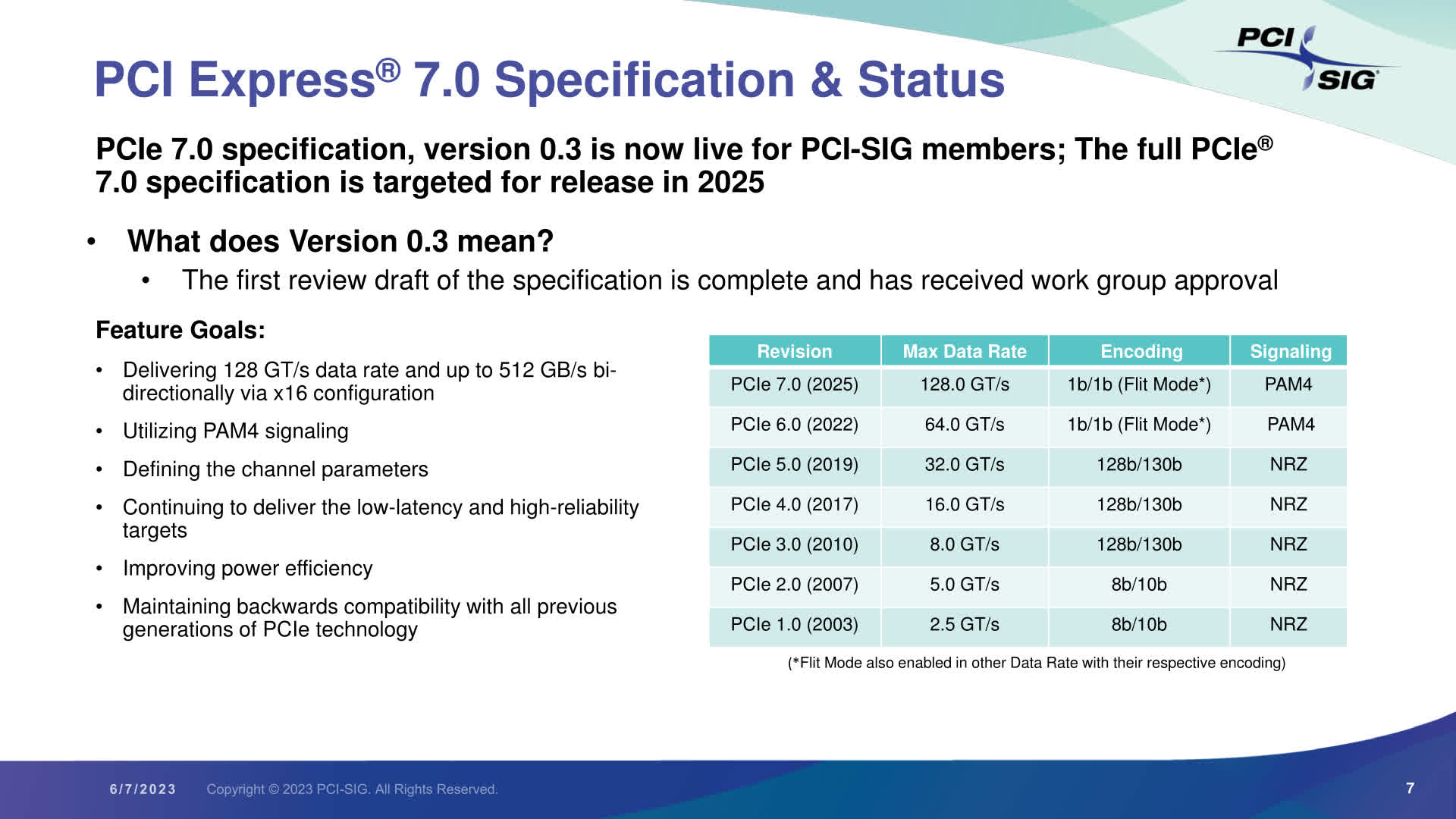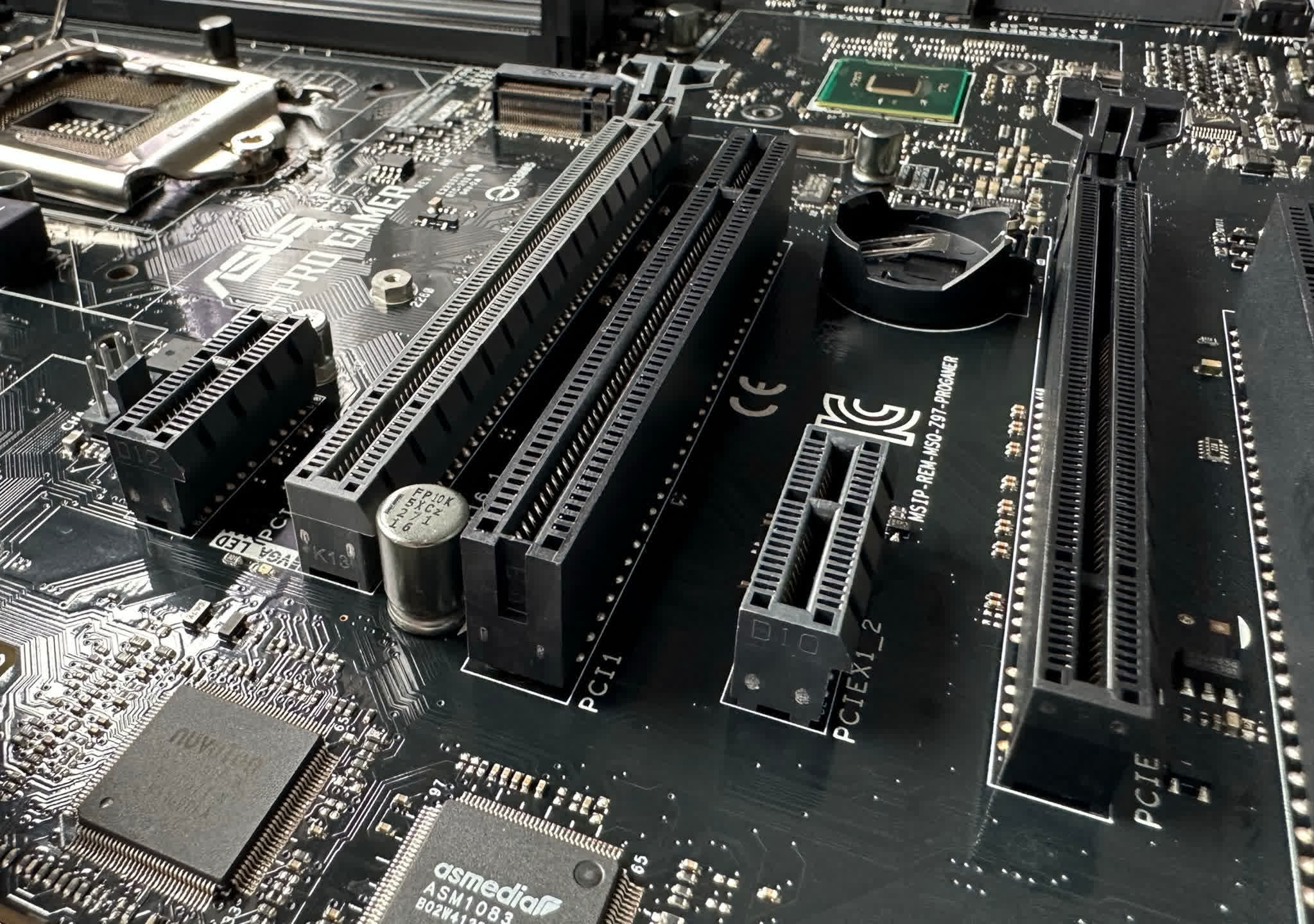What just happened? Most consumer PCs currently use PCIe 3.0 or 4.0 components, while 5.0-supported systems are considered cutting-edge, but the organization overseeing PCIe development is already working on 7.0. The latest milestone represents a significant step on the technology's future roadmap.
This week, the PCI Special Interest Group (PCI-SIG) consortium released the first review draft specification for PCIe 7.0 to members. Details on the in-development technology are still early, but the announcement confirms that the evolution of PCIe is proceeding on schedule.
The consortium released the 0.3 draft specification during the 2023 PCI-SIG Developers Conference in Santa Clara. While there hasn't been much new publicly-available information on PCIe 7.0 since its initial unveiling last summer, the milestone allows hardware developers to begin early work on products that will eventually support the standard.
Like PCIe 6.0, 7.0 is designed to double its predecessor's bandwidth, effectively achieving four times the bandwidth of PCIe 5.0. It takes the data rate from 64 to 128 gigatransfers per second for a bidirectional 512GB/s of throughput via an x16 configuration.

The new specification also continues the previous generation's use of PAM4 signaling. The designers are striving to offer low latency and high reliability while increasing power efficiency. Unsurprisingly, PCIe 7.0 maintains backward compatibility with its predecessors.
During the conference, PCI-SIG will also provide an update on PCIe 5.0 and 6.0 cabling specifications – mostly for data center usage – which it plans to release in Q4 2023. Both standards will use the same specification, sharing the same signaling frequency.
Also read: The Inner Workings of PCI Express – How Hardware Works
Most consumers won't see devices utilizing PCIe 6.0 for some time, much less 7.0. The latest PC components started the upgrade to PCIe 5.0 connections last year, and most users haven't adopted them yet. The consortium released the final PCIe 6.0 specification last January, but no available products yet employ it. The final specs for 7.0 are planned to arrive in 2025 while supporting hardware could appear in 2027 or 2028.
The two upcoming generations will first target enterprise markets. PCIe 6.0 will likely debut in data centers or other industrial, automotive, military, and aerospace settings. PCI-SIG is aiming 7.0 toward 800G ethernet, AI, machine learning, cloud computing, quantum computing, hyperscale data centers, and high-performance computing.
